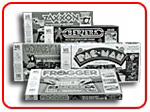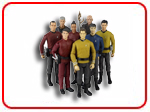Casio VL-Tone, keyboard
- Gegevens
- Geschreven door Smallmart
The Casio VL1 (or VL-Tone) was one of those truly bizarre products in musical history.

Half calculator, half 'synthesiser'... it had almost nothing to redeem itself other than its low cost - you certainly didn't buy one for its sounds which, as you might imagine, were cheap and cheezy. Apparently, the thing was originally designed to be produced solely as a 'musical instrument' (I use the term loosely!). One of the four Kashio brothers who founded the company was a would-be musician as well as an electronics engineer and he had designed a simple and inexpensive LSI (Large Scale Integration) chip that could be used for musical purposes but executives at the company weren't confident that it had enough features to sell in its own right so some bright spark at Casio had the idea to add (no pun intended!) a calculator! Obvious really! What else would you add to a small, portable musical instrument?! I guess that as one of the world's leaders in calculator manufacture, they had the technology for free.
As well as being a calculator, it could also be powered up in a mode that offered a handful of monophonic sounds that could be played from the two-octave 'keyboard' (an inappropriate term for the row of unplayable and unreliable switches you can see above). The VL-Tone had four 'instrumental' sounds - Flute, Piano, Guitar and Violin. To describe these sounds as 'realistic' would be highly misleading. There was also one preset 'synth' sound plus another called 'ADSR' which could be 'programmed' using the calculator part of the unit - by typing in obscure strings of numbers, you could make rudimentary changes to the sound's amplitude envelope and also tremolo and vibrato rates. All the sounds could also be transposed up or down by one octave using a dedicated slider switch. It also had a simple 100-step sequencer.
It was something of a novelty gadget along the lines of a Stylophone and sounded pretty poor through its own small speaker but played through the line output, it could sound fairly reasonable, so much so that It was used by the Human League, Devo, The Cars and others - even Stevie Wonder is alledged to have used one!
However, it was the German band 'Trio' who gave the VL-Tone its finest moment of fame in their record "DaDaDa" which was a huge huge hit (especially in Europe) and which used one of the VL-Tone's preset rhythms as its foundation. That song (or a pastiche of it) is still used today as the soundtrack for a washing machine manufacturer's TV ads.
The VL-Tone achieved a certain cult status and was used in later years by Moby and Goldie and others. And despite its obvious limitations, the VL-Tone sold 1,000,000 units in its five year lifetime (1979-1984). This success obviously spurred Casio on to get more involved in the music business and they later went on to release polyphonic variations on the technology with full size keyboards (without the in-built calculator!) and beyond. In later years, they brought us the FZ1 sampler, the CZ and VZ range of phase-distortion synthesisers and the RZ1 sampling drum machine.
The soundset in Nostalgia includes the VL-Tone's presets as well as the the famous 'Trio' drum loop. All the sounds except the 'Trio' program are mapped out from C1-C6 - the 'Trio' drum sample is on C3 only. The samples themselves are just loops of the raw waveform - the envelopes and vibrato, etc., are re-created in the Kompakt program.
Casio VL-Tone Emulator
Copyright hollowsun.com







